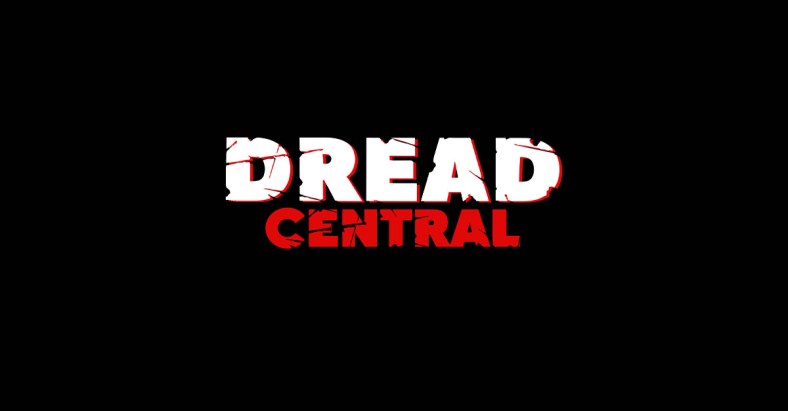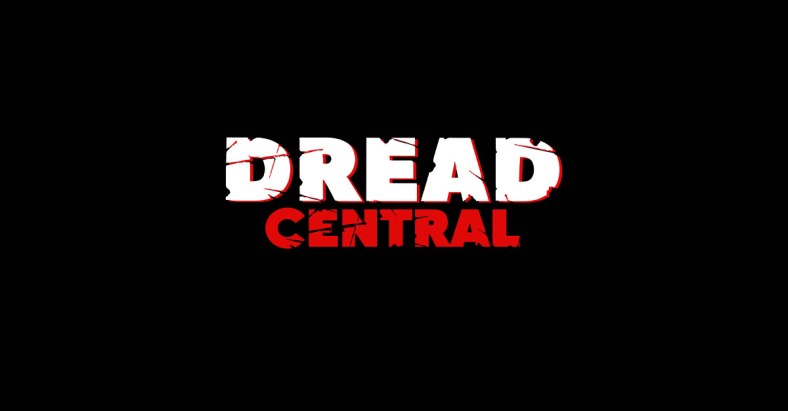Exclusive: Harriet Dyer on Killing Ground

In the latest shocker from Down Under, Killing Ground, Sam (Harriet Dyer) and Ian (Ian Meadows) take off on what they believe will be a peaceful camping trip. But you know there’s no such thing as that in a horror movie, don’t you? Their break turns into a battle for survival when they discover a bloody toddler wandering around in the bush and find that an incredibly disturbing crime has been committed. We had the opportunity to watch the film, then sit down with star Dyer to ask all about her role and the shoot.
Killing Ground will be in theaters and available on VOD July 21st.
Dread Central: This movie could be pretty disturbing to some, and it does stick with you long after the end-credits roll.
Harriet Dyer: Thanks for watching it! I do sometimes forget how disturbing it is. I remember I saw it at a screening in Sydney, and I had a few friends, they were female friends, and I saw them afterwards, and I was like, “Did you like it? Did you like it??” And they just looked like they had just gone white, and like, “Yeah, we’re going to go home…” and I was like, “Oh, OK…” I forget the ending is actually pretty brutal.

Photo Credit: Sarah Golonka
DC: It kind of harkens back to the films of the 1970s. Tonally, anyway. Is that how it was initially presented to you by Damien Power? [writer-director]
HD: He didn’t mention the ‘70s. He mentioned a film called It Follows. That kind of slow building tension and fear is what he referenced. But in terms of films from the 70s, which ones can you think of?
DC: Picnic at Hanging Rock, The Long Weekend. Not the same story, but there’s that sense of dread.
HD: Yeah, I know exactly what you’re talking about. He’s very talented I think, Damien, and I love that it comes from a place of just being a Dad – being terrified – he told me the reason he needed to make the film is because he had two children. And once he had two children he was like: I don’t know how to protect them from anything. I can do my best, but there are so many crazy people out there. And his way of dealing with that was making a film with two very crazy people who are terrorizing good people. I think that’s such an amazing way of dealing with your own fear is creating it.
DC: What was it like being on location there, and what were some of the more challenging aspects of it for you as an actor?
HD: For me, it was just like living the worst day of your life for 5 weeks in summer heat. Just because that kind of fear [being felt] – your body doesn’t know the difference between fantasy and reality. Your brain does, but if you spend all day hyperventilating and worrying about where that gun is and where that guy is, at the end of the day, your body is like, “I’m sorry, what’s going on? Is there something weird? Are we going through an apocalypse? It’s been 5-weeks now. You’re just stressing me out all day.” It was just a little bit of a kind of brain-body battle just trying to take a load off. I drank a lot whiskey at night. Just we had these weird little hotel rooms out in the bush. And I’d just locked the door, pour myself a few whiskeys, and watch TV. Like that would be I didn’t really see anybody. My boyfriend was in L.A. anyway. It’s just like “Oh just take this time. It’s my time.” It was very rainy. The film is outside so we didn’t have any weather cubbies. We couldn’t go anywhere. There was nowhere had to stand or huddle under this little tent and watch the rain fall and watch the storm radar on our phones and wonder how long it was going to be. And then this guy from the art department would come out with his flamethrower and dry all the dirt to try to make it look like it hadn’t been raining, and that was always my favorite thing to watch was this guy trying to dry a monsoon.
DC: When your character is pretty much in a state of pure adrenaline the whole time, how do you find the nuances within that?
HD: It was just about putting panic on kind of constant rotation. There was a few times where I thought, as an actor trying to pick lots of different colors, like maybe I did want shocking on this one or didn’t want hysterical or just be quiet behind the eyes, and so I was trying to find little colors. But then Damien would come up to me and he’d be like, “Just a reminder: you just had a gun to your head. You just had a chance to get out.” He had to remind me that, you know what? Basically, the only color is fear. He’d remind me to amp it up again. Because I’d think I was scared of not doing a “filmic” enough performance, but he kept amping me up. So, when I first saw it, I was a bit nervous, but he totally pitched it right. And I’m glad for him because he kept me on the level that I needed to be on. It was just hard to maintain that for 5-weeks in my head. I kept thinking well maybe there is something ese to find here, and there really wasn’t. He was really a great guide.
DC: And yet Sam is a fully realized character, as much as she can be in the moment we come into her life in the film. So, what about this character made you want to play it when you read the script?
HD: I guess I’m really into taking on strong female leads. As you can image, they’re coming out now with Wonder Woman and so many female-fronted films now, but Australia’s a little bit behind. Dramas on TV are still just like dudes doing dude things and women going, “No! Stop!” and women aren’t really involved in the action, and it so it was so refreshing. I don’t want to have a spoiler, but Sam comes out on top. That was huge. She’s not just a victim. She’s not eye candy. She’s a strong, smart, cog of the story. You could easily switch Ian and her character and make her the coward. And I just thought it was so cool, and that’s what attracted me to it. I also really love scary movies. I love scary movies, so it was kind of a dream to be in one.
DC: For folks who love Wolf Creek and brutal Australian serial killer stories like that, where would you say Killing Ground falls into the category?
HD: I would say it is like Wolf Creek, but there’s that real point-blank horror to it, isn’t there? And the thing that’s different about this one is that it happens when you least expect it. Loads of terror happens during the day without any crazy string quartet. It is fast kind of horror that grabs you. That’s something that I hadn’t seen before.
About the Film:
Killing Ground is a tightly-wound thriller reminiscent of the 70’s survival thrillers such as Deliverance and Straw Dogs and more recent chillers The Vanishing and Funny Games. The film is a modern campfire story about fear, violence, heroism, and the limits of courage.
This exceptionally well-crafted film is written and directed by Damien Power, who is making his feature film debut. Considered one of Australian’s rising directors and praised for his “original voice and distinctive storytelling,” Power’s short films have been programmed in noteworthy festivals such as Busan and Venice.
The film tells the story of Ian and Samantha, who arrive at an isolated campsite to find an SUV and a tent – no sign of the occupants. As night falls and the campers fail to return, Ian and Sam grow increasingly uneasy. The discovery of a distressed child wandering in the woods unleashes a terrifying chain of events that will test them to the breaking point.
Ian Meadows, who plays Ian, and Harriet Dyer (Logie Award-nominated actress for Most Outstanding Newcomer and Most Popular New Talent), who plays Sam, deliver powerful performances that have audiences feeling every desperate moment.
Aaron Glenane, most recently seen in the film Truth alongside Cate Blanchett and Robert Redford, plays Chook, whose outward calm hides a frightening cruelty. His mentor in murder, German, is played with cold malice by Aaron Pedersen, an award-winning actor best known for the hit thriller Mystery Road. Together, Chook and German are an unforgettable criminal duo.
Killing Ground has a taut, non-linear structure, which contributes to an atmosphere of timeless menace and dread. Tension builds as the narrative threads wind together, danger escalates, and Sam and Ian’s options narrow drastically. The Australian bush setting plays a significant role in the film, and Killing Ground is part of a long tradition of Australian cinema – from Picnic at Hanging Rock to Wolf Creek – that finding a deep sense of unease in a hostile wilderness.

Categorized:News

